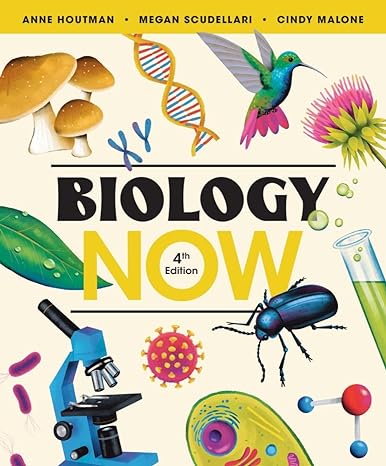Learn to maximize tilapia production in different areas around the world
Tilapia is the second-most cultured fish species in the world, and its production is increasing each year. However, for several reasons profit margins remain slim. Tilapia: Biology, Culture, and Nutrition presents respected international experts detailing every aspect of tilapia production around the world. Biology, breeding and larval rearing, farming techniques, feeding issues, post-harvest technology, and industry economics are clearly presented. This concise yet extensive reference provides the latest research and practical information to efficiently and economically maximize production in diverse locales, conditions, and climates.
Tilapia: Biology, Culture, and Nutrition comprehensively explores all types of tilapia with a detailed biologic description of the fish that takes readers from egg through harvesting. The book authoritatively discusses production issues such as feed nutrition, temperature, water quality, parasites, and disease control to guide readers on how to best encourage fast, efficient growth. Economic and marketing information are examined, including industry data and projections by country. Each chapter approaches a specific facet of tilapia and provides the most up-to-date research available in that area. This resource gives the most current, detailed information needed for effective tilapia farming in one compact economical volume. Extensively referenced with an abundance of clear, helpful tables, photographs, and figures.
Tilapia: Biology, Culture, and Nutrition discusses in detail:
- complete biology, including sex ratios, optimum temperatures for growth and spawning, water quality parameters, and disease tolerance
- industry predictions
- hormonal control of growth
- genetic improvement
- sex determination, manipulation, and control
- seed production
- culture practices
- earthen and lined pond production
- culture in flowing water
- cage culture
- feed formulation and processing, and feeding management
- soil, water, and effluent quality
- saline tolerance levels with optimum rate of acclimation to seawater
- polyculture of tilapia with shrimp
- bottom soil conditions
- nutrient requirements with non-nutrient components
- parasites and diseases
Tilapia: Biology, Culture, and Nutrition is essential reading for aquaculturists, nutritionists, geneticists, hatchery managers, feed formulators, feed mill operators, extension specialists, tilapia growers, fish farmers/producers, educators, disease specialists, aquaculture veterinarians, policy makers, educators, and students.
چکیده فارسی
بیاموزید که تولید ماهی تیلاپیا را در مناطق مختلف جهان به حداکثر برسانید
ماهی تیلاپیا دومین گونه پرورش یافته ماهی در جهان است و تولید آن هر ساله در حال افزایش است. با این حال، به دلایل متعدد حاشیه سود کم است. تیلاپیا: زیست شناسی، فرهنگ و تغذیه متخصصان معتبر بین المللی را ارائه می دهد که تمام جنبه های تولید ماهی تیلاپیا را در سراسر جهان شرح می دهند. زیست شناسی، اصلاح نژاد و پرورش لارو، تکنیک های کشاورزی، مسائل مربوط به تغذیه، فناوری پس از برداشت و اقتصاد صنعت به وضوح ارائه شده است. این مرجع مختصر و در عین حال گسترده، آخرین تحقیقات و اطلاعات عملی را برای به حداکثر رساندن کارآمد و اقتصادی تولید در مناطق، شرایط و اقلیم های مختلف ارائه می دهد.
تیلاپیا: زیست شناسی، فرهنگ و تغذیه به طور جامع همه انواع تیلاپیا را با شرح بیولوژیکی دقیق از ماهی که خوانندگان را از تخم مرغ تا برداشت می برد، بررسی می کند. این کتاب بطور معتبر در مورد مسائل تولید مانند تغذیه خوراک، دما، کیفیت آب، انگلها و کنترل بیماری بحث میکند تا خوانندگان را در مورد چگونگی تشویق به رشد سریع و کارآمد راهنمایی کند. اطلاعات اقتصادی و بازاریابی شامل دادههای صنعت و پیشبینیها بر اساس کشور مورد بررسی قرار میگیرد. هر فصل به جنبه خاصی از ماهی تیلاپیا می پردازد و به روزترین تحقیقات موجود در آن زمینه را ارائه می دهد. این منبع جدیدترین و دقیق ترین اطلاعات مورد نیاز برای پرورش موثر تیلاپیا را در یک حجم اقتصادی فشرده ارائه می دهد. به طور گسترده با فراوانی جداول، عکسها و شکلهای واضح و مفید ارجاع داده شده است.
تیلاپیا: زیستشناسی، فرهنگ و تغذیه به تفصیل بحث میکند:
- زیست شناسی کامل، از جمله نسبت جنسی، دمای بهینه برای رشد و تخم ریزی، پارامترهای کیفیت آب، و تحمل بیماری
- پیشبینیهای صنعت
- کنترل هورمونی رشد
- بهبود ژنتیکی
- تعیین، دستکاری و کنترل جنسی
- تولید بذر
- عملکردهای فرهنگی
- تولید حوضچه های خاکی و آستردار
- فرهنگ در آب جاری
- فرهنگ قفس
- فرمولاسیون و پردازش خوراک، و مدیریت تغذیه
- کیفیت خاک، آب و پساب
- سطوح تحمل شوری با نرخ بهینه سازگاری با آب دریا
- پرورش ماهی تیلاپیا با میگو
- شرایط خاک پایین
- مواد مغذی مورد نیاز با اجزای غیر مغذی
- انگل ها و بیماری ها
تیلاپیا: زیستشناسی، فرهنگ و تغذیه برای آبزیپروران، متخصصان تغذیه، ژنتیکشناسان، مدیران جوجهکشی، فرمولسازان خوراک، اپراتور کارخانههای خوراک، متخصصان ترویج، پرورشدهندگان ماهی تیلاپیا، پرورشدهندگان/تولیدکنندگان ماهی، مربیان ضروری است. ، متخصصان بیماری، دامپزشکان آبزی پروری، سیاست گذاران، مربیان و دانشجویان.
ادامه ...
بستن ...










